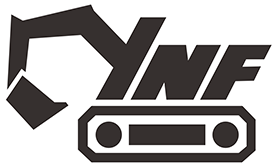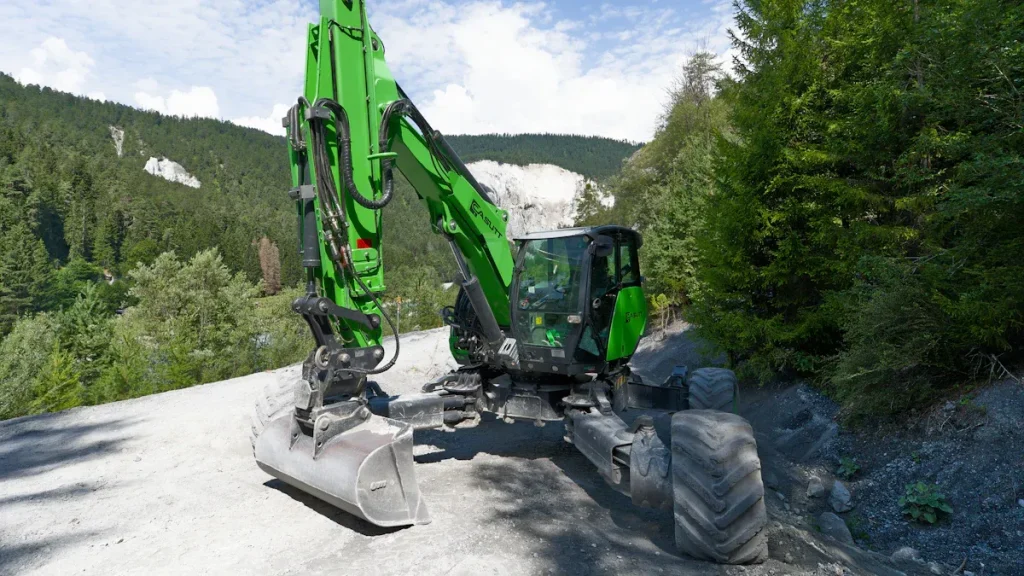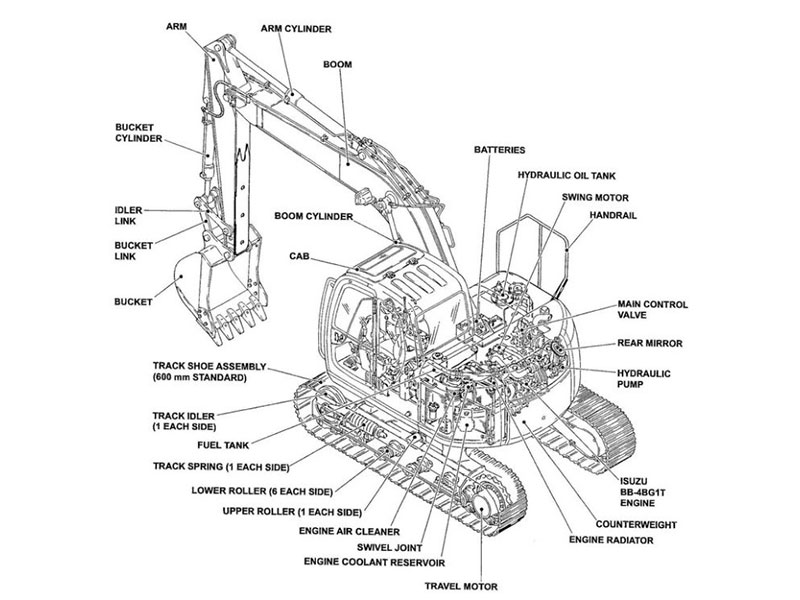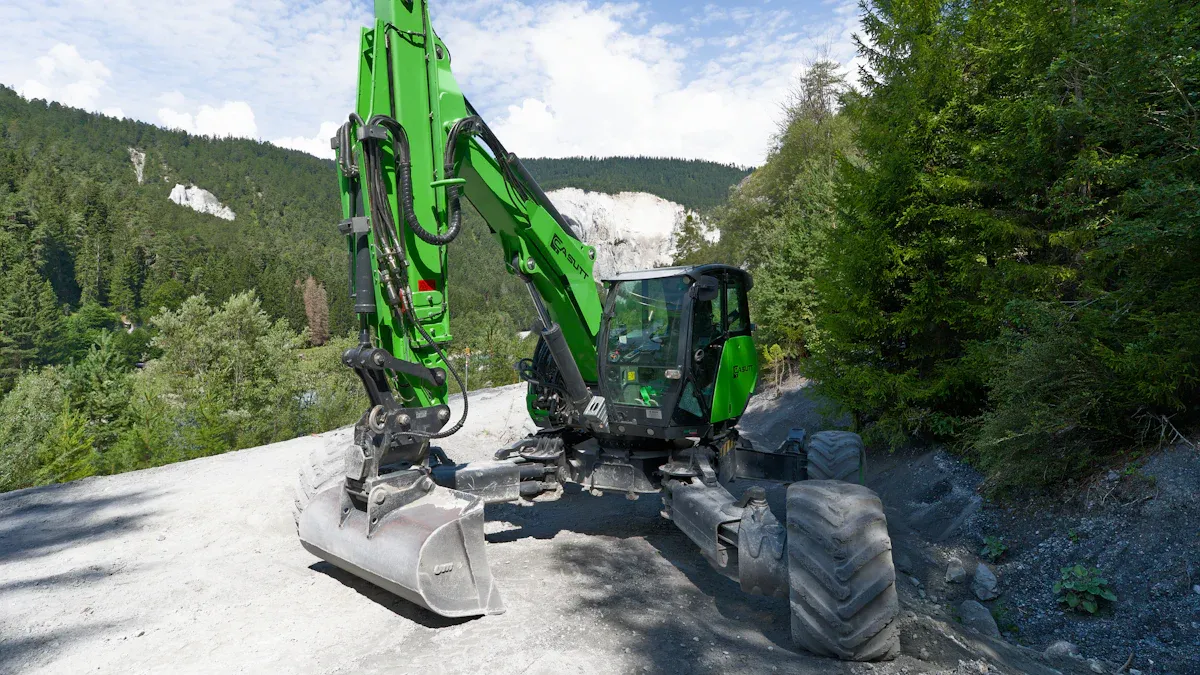
You want your excavator to work smarter, not harder. The right attachment can turn a simple job into a fast, easy win. When you choose must have attachments like a bucket, you boost your machine’s power and save time. Buy your excavator attachments from excavator parts direct for more choices and better prices. Each new attachment gives you more ways to get the job done right. You keep your projects on track and your costs low with the right bucket or tool.
Key Takeaways
Pick the best excavator attachments to make your machine stronger and finish work faster. – Use attachments like hydraulic thumbs, quick couplers, and tilt buckets to do many jobs safely and easily. – Make sure each attachment fits your job and your excavator to stop damage and delays. – Take care of your attachments by checking, cleaning, oiling, and storing them the right way to help them last longer. – Buy attachments straight from the seller to get lower prices, good parts, and expert help for your projects.
Must Have Attachments
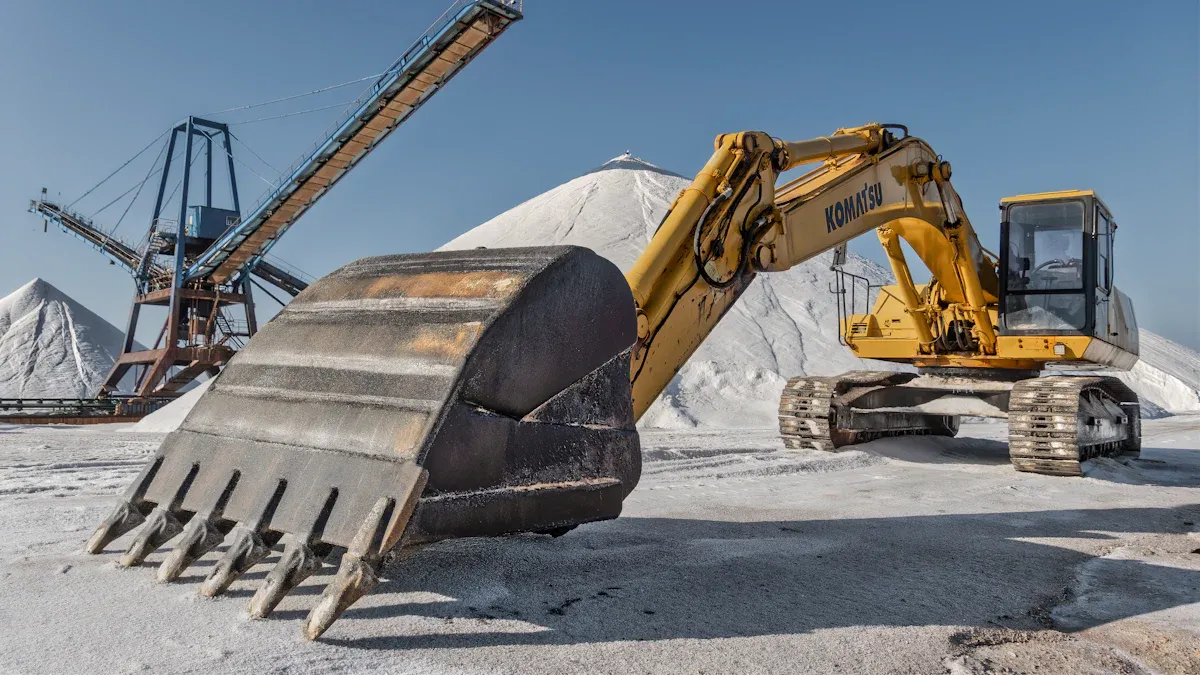
Hydraulic Thumb
A hydraulic thumb helps you pick up odd-shaped things. It works with your mini excavator bucket like a strong finger. You can grab logs, rocks, and scrap metal easily. This tool gives you more control and grip. You move things safely and fast. You do not need extra workers to help. The hydraulic thumb is good for land clearing and demolition. It also helps with recycling jobs. Make sure your machine’s hydraulic system fits the thumb. Check and oil it often so it works well. The hydraulic thumb is one of the must have attachments for more job options.
Quick Coupler
A quick coupler makes changing attachments much faster. You can switch from a mini excavator bucket to a hydraulic breaker in seconds. You stay in the cab, so you are safe and comfortable. You do not risk getting hurt by changing tools by hand. You save time and get more work done.
Tip: Quick couplers fit many attachments, like mini excavator attachments and tiltrotators, so you do not need special tools for every job.
Key benefits of a quick coupler:
Fast changes make your machine more useful.
Operators stay safe and comfortable in the cab.
Less waiting means more work gets finished.
Multi-pin grabber couplers fit many machines, saving money.
Hydraulic quick couplers use a switch for easy changes.
Automatic systems help stop oil spills and messes.
Check if your excavator and attachments work with the coupler. Hydraulic quick couplers cost more at first, but you save time and stay safer.
Tilt Bucket
A tilt bucket helps you shape and grade land better. You can tilt it up to 45 degrees left or right. This helps you work on slopes and uneven ground. The tilt bucket uses hydraulic rams, so you control it from the cab. You finish hard grading jobs faster and with less work.
Note: Tilt buckets are strong, with tough edges and wear plates.
Main functions and benefits:
Handle slopes and tricky ground easily.
Need fewer machines or workers.
Change the angle without moving the excavator.
Works with quick couplers and tiltrotators for more options.
Take care of the hydraulic hoses and rams to keep it working. Losing a little digging power does not matter for shaping land. This attachment makes your mini excavator bucket great for landscaping and roadwork.
Trenching Bucket
A trenching bucket is best for digging narrow, deep trenches. You use it to put in pipes, cables, and drains. There are different shapes, like V buckets for V-shaped trenches and micro trenching buckets for tiny, deep cuts.
Bucket Type | Main Features | Applications |
|---|---|---|
V Bucket | Makes clean V-shaped trenches; may have teeth for hard ground; needs a bigger excavator | Digging and cleaning narrow V-shaped trenches for cables, pipes, and ditches |
Micro Trenching Bucket | Narrow, claw-like shape; makes very narrow and deep trenches; saves time digging and filling | Digging narrow trenches a few inches wide for fiber-optic cables, pipes, and irrigation |
You get neat trenches with less filling needed. The trenching bucket works with mini excavator attachments and tiltrotators. Make sure your excavator fits the bucket size and weight. Check the teeth and edges often for smooth digging.
Auger Attachment
An auger attachment drills holes in dirt, clay, or rock. It is great for fence posts, planting trees, and building foundations. The auger uses hydraulic power to spin and dig deep holes.
Tip: Always check the auger’s hydraulic flow and pressure for your excavator.
Key considerations:
Make sure the hydraulic setup is right so the auger spins correctly.
Check the screw bit and teeth before each job.
Know your soil type. Hard ground or rocks need more power or special bits.
Clear grass and junk to stop clogging.
Use stabilizers on slopes to stay safe.
Call utility services before digging to avoid hitting lines.
The auger attachment saves you lots of digging time. It keeps your holes the same size. It works with mini excavator attachments and is easy to swap with a quick coupler.
Hydraulic Breaker
A hydraulic breaker turns your excavator into a strong demolition tool. You use it to break concrete, rock, and asphalt with powerful hits. The hydraulic breaker uses a piston to hit hard, making it faster than doing it by hand.
Main functions and benefits:
Breaks tough stuff for demolition and roadwork.
Helps with mining and trenching.
Removes old concrete and rock for new projects.
Breaks down big pieces for recycling.
You finish jobs faster and with less effort. Hydraulic breakers are quieter and shake less than blasting. Check the hydraulic system and keep the tool in good shape. Use the right size breaker for your mini excavator bucket to avoid damage.
Grapple Attachment
A grapple attachment lets you grab, lift, and move big or odd things. You can clear land, handle logs, rocks, or junk, and sort scrap easily. The hydraulic grapple has strong jaws to hold things tight, so you need less manual work and stay safer.
Advantages of a grapple attachment:
Handles rocks, brush, roots, and mixed junk.
Saves time and work.
Makes the jobsite safer.
Different types, like root, brush, and rock grapples, fit different jobs.
You can use a bucket grapple for mixed stuff or a hydraulic grapple for heavy loads. Landscapers, farmers, and builders all use this tool. Make sure your mini excavator attachments fit the grapple’s size and weight. Check it often to keep it working well.
Sieve Bucket
A sieve bucket helps you sort things by size on the jobsite. You scoop up dirt, rocks, and junk, and small pieces fall through while big ones stay. This tool is great for getting soil ready, recycling waste, or sorting ore.
Key benefits:
Saves time by sorting as you dig.
Cuts costs by recycling on site.
Leaves clean soil for planting.
Made from strong steel to last long.
You can use a sieve bucket with mini excavator attachments and quick couplers. Check for wear and clean it after each use to keep it working well.
Rock Saw
A rock saw attachment lets you cut hard things like stone, concrete, and asphalt. You can cut up and down or sideways because the saw turns all the way around. The rock saw uses big blades for deep, neat cuts, so it is good for trenching and roadwork.
Main features:
Cuts rock, concrete, steel, and wood.
Has instant brake and dust shields for safety.
Saves time on jobs that need clean cuts.
Makes less noise and shaking than other ways.
Pick the right blade for what you are cutting. The rock saw works with mini excavator attachments and is easy to put on and take off. Store it safely to protect the blade.
Compaction Wheel
A compaction wheel packs dirt tight after digging or filling. You use it to get ground ready for buildings, roads, or trenches. The compaction wheel covers big areas fast and packs the dirt deep and even.
Factor | Compaction Wheel (Roller) | Plate Compactor |
|---|---|---|
Compaction Efficiency | Very good for big jobs and large areas; packs deep and strong | Good for small to medium jobs; packs well but not as deep or fast |
Project Suitability | Best for big projects and many soil types | Best for small to medium jobs, especially in tight spots |
Maneuverability | Hard to use in small spaces; not easy to move | Easy to move in tight or tricky areas |
Cost | Costs more and uses more fuel; not cheap for small jobs | Cheaper for small jobs; uses less fuel and is easy to fix |
Operation & Maintenance | Needs special training; harder to fix | Easy to use and fix; good for all skill levels |
Fuel Efficiency | Uses more fuel | Uses less fuel, good for short jobs |
Transportation | Needs special transport because it is big and heavy | Small and easy to move |
You get better results on big jobs with a compaction wheel, but it costs more and is harder to move. For small or tight spaces, a plate compactor might be better. Always check your mini excavator attachments fit and keep the compaction wheel clean and in good shape.
Choosing Attachments
Job Requirements
You need to match each attachment to your job. Think about what you want to do. Do you need to dig, lift, or break? A bucket works best for digging and moving dirt. For lifting logs or rocks, you should use a grapple attachment. If you want to dig holes for posts, pick an auger. Mini excavator attachments help you work in tight spaces. You can use a tilt bucket for shaping slopes or a trenching bucket for narrow ditches. Make a list of your daily tasks. Choose attachments that help you finish faster and safer.
Tip: Ask your team which attachment saves the most time on your site.
Machine Compatibility
You must check if the attachment fits your excavator. Look at your machine’s size, weight, and hydraulic power. Not every bucket or tool will work with your model. Mini excavator attachments need the right coupler and hydraulic lines. If you use the wrong attachment, you can damage your machine. Always read the manual before you buy. Some attachments, like a heavy-duty bucket or breaker, need more power. Make sure your quick coupler matches the attachment. Test the fit before you start work.
Budget & ROI
You want to get the best value for your money. Set a budget for each attachment. Think about how often you will use it. A bucket is a must-have, so spend more on quality. Some attachments cost more but save you time and labor. Check if buying direct gives you better prices. Look for deals on mini excavator attachments and buckets. Calculate how fast the attachment pays for itself. If it helps you finish jobs quicker, you make more profit.
Note: Direct purchase often means lower prices and more choices for every bucket or tool.
Attachment Maintenance
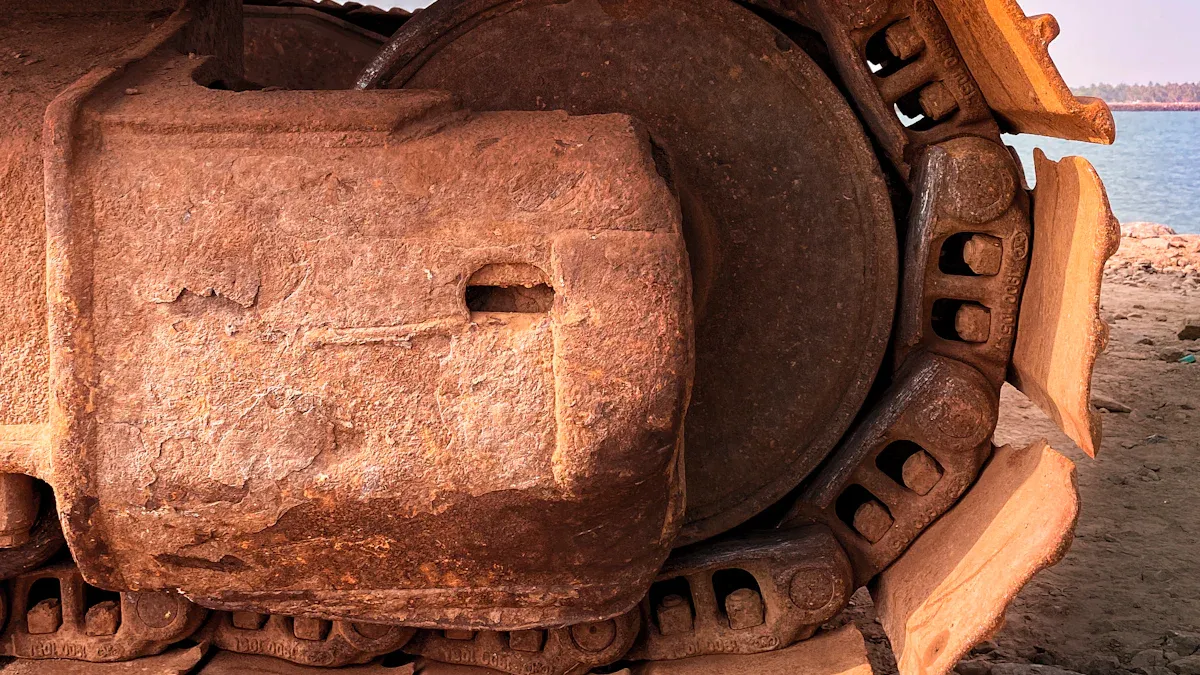
Inspection
You want your attachment to last a long time and stay safe. Start each day by checking your attachment before you use it. Look for leaks, cracks, or bolts that are loose. Check the engine oil and hydraulic oil levels. Test all safety parts, like lights and emergency stops. Follow a schedule to do bigger checks at 250, 500, 1,000, and 2,000 hours. Change the oil and filters when needed. Look at the hydraulic lines and the body of each attachment. Write down what you find and any repairs you do. Teach your team the newest ways to inspect attachments. Look at your inspection steps often and make them better if you can.
Look for damage or leaks before using any attachment.
Check oil levels and safety parts.
Do big checks at set times.
Write down all checks and repairs.
Teach workers and update your steps.
Checking your attachment often keeps it safe and ready for work.
Cleaning & Lubrication
Clean your attachment after you finish using it. Dirt and junk can make it wear out or get rusty. Use a pressure washer or brush to clean off mud and dirt. Dry the attachment so it does not rust. Put grease on all moving parts, like pins and bushings. This helps the parts move smoothly and last longer. Look for grease spots on each attachment and follow the manual. Clean and grease your attachment often so you do not have to pay for big repairs.
Clean after every job.
Grease all moving parts.
Use the right grease for your attachment.
Storage
Keep your attachment in a dry place with a roof. Do not leave it on the ground so it does not rust or break. Use pallets or racks to store it. If you must keep it outside, cover it with a tarp. Put a label on each attachment so you can find it fast. Check stored attachments often for rust or damage. Good storage keeps your attachment safe and ready to use.
Storing your attachment the right way helps it last longer and saves you money.
Excavator Parts Direct Benefits
Cost Savings
You want to get the most value for your money. When you buy from excavator parts direct, you skip the middleman. This means you pay less for every attachment. You can use your savings to buy more tools or invest in your business. Many suppliers offer special deals when you buy direct. You also avoid hidden fees that come with third-party sellers.
Tip: Always compare prices before you buy. You will see that excavator parts direct gives you better deals on every attachment.
Quality Assurance
You need attachments that last. When you choose excavator parts direct, you get products that meet strict quality standards. Direct suppliers test each attachment before shipping. You receive parts that fit your machine and work right the first time. If you have a problem, you can talk to the supplier and get help fast.
You get new, genuine parts.
You avoid fake or low-quality products.
You trust that your attachment will perform on every job.
Supplier Support
You deserve support after your purchase. With excavator parts direct, you get expert advice on choosing the right attachment. If you have questions, you can call or email and get answers quickly. Many direct suppliers offer warranties and easy returns. You can also get help with installation or maintenance.
Benefit | What You Get |
|---|---|
Expert Advice | Help picking the best attachment |
Fast Response | Quick answers to your questions |
Warranty & Returns | Peace of mind for every purchase |
Good support helps you keep your projects moving and your equipment working.
You can get more work done and spend less money with the right excavator attachments. Each tool lets you finish jobs quicker and makes work easier. If you buy from excavator parts direct, you pay less and have more options. The parts you get are strong and last a long time. Are you ready to make your machine better? Try buying direct and notice how it helps your next project.
FAQ
What is the best first attachment to buy for my excavator?
You should start with a high-quality bucket. This tool handles most digging and loading jobs. You get more done with less effort. A strong bucket lasts longer and saves you money over time.
How do I know if an attachment fits my machine?
Check your excavator’s manual for size and hydraulic specs. Match these with the attachment’s requirements. If you buy direct, ask the supplier for help. You avoid costly mistakes and keep your machine safe.
Can I use the same attachment on different excavators?
Some attachments fit many machines if you use a quick coupler. Always check compatibility first. You save money by sharing tools across your fleet.
Tip: Ask your supplier about universal attachments for more flexibility.
How often should I maintain my attachments?
Inspect and clean your attachments after every use. Grease moving parts weekly. Follow the maintenance schedule in your manual. Regular care keeps your tools working longer and prevents breakdowns.
Why should I buy excavator parts direct?
You get better prices, more choices, and expert support. Direct suppliers offer genuine parts that last longer. You save money and finish jobs faster.
Choose direct for the best value and peace of mind.
